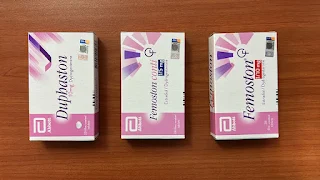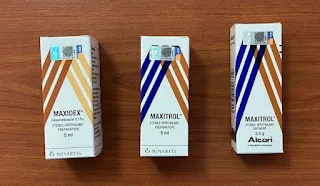Medication Error Case Examples
Introduction
Medication error is any preventable event that may harm patient.
- In outpatient pharmacy setting, centralized quality dispensing control (CQDC) is ideally in place to minimize medication errors.
Most medications errors can be attributed to carelessness or fatigue, such as
- Picking up the wrong medications or medications with wrong strength
- Labelling error on dose and frequency
- Labelling error on patient name
Since all humans make mistakes, focusing on improving weaknesses in the medication-use system is the cornerstone of sustainable medication safety.
- Sharing mediation errors serves as a valuable source of data and insights, allowing us to identify vulnerabilities and implement targeted interventions.
Today, we are going to have a few case examples, focusing primarily on prescribing errors.
Carbamazepine and Carbimazole
A prescription of CBZ 10 mg reached a junior pharmacist at the outpatient counter.
- He glanced at the low dose, wondering if it was because the patient is a small child.
- Then, he asked me, "Do we carry carbamazepine syrup?".
Fortunately, the indication was written clearly on the prescription: Grave's disease.
- Following clarification with the prescriber, carbimazole tablets were dispensed.
This incident highlights the potential hazards that can arise from the use of unconventional medical abbreviations in prescription communication, as well as the confusion caused by sound alike medications.
- Other common examples of similar-sounding medications include confusion between "chlorpromazine" and "clozapine" or between "clobetasol propionate" (Dermovate) and "clobetasone butyrate" (Eumovate).
Look-Alike Medications
Look-alike medicines appear visually the same with respect to packaging, shape, colour and/or size.
Before dispensing any medication, it is a routine for me to do a quick final check on the medications.
- The prescription was a simple one: T. Sertraline 100 mg OD.
- I did not identify any errors on medication label and the quantity prepared.
Nonetheless, when the patient just walked off from the counter, my sixth sense is telling me something was not right.
- I sprinted after the patient and double-checked the medications inside the box.
- My worst fears confirmed, two amlodipine 10 mg strips masquerading amongst the sertraline.
Experiences may have taught us to do things quicker. Extra careful is still of utmost importance.
- Also, similar packaging design across medication strengths can lead to inadvertent selection errors, potentially impacting patient safety.
- When doing medication return, please be extra careful too.
Lack of Familiarity with Product Range
As highlighted many times, medication errors are never intentional. However, they can happen due to a lack of experience or exposure to medications.
A doctor once wrote in a prescription "C. Tacrolimus 1 mg BD," without mentioning the brand name or dosage form.
- Tacrolimus capsules are available in two forms: immediate-release (Prograf) and prolonged-release (Advagraf) capsules.
- Typically, Prograf is prescribed twice daily, while Advagraf is prescribed once daily.
- Nonetheless, before supplying this medication, it is best to confirm with the prescriber if no brand or dosage form is mentioned.
Other relevant examples include
- Tacrolimus ointment (Protopic) comes in two strengths: 0.03% and 0.1%.
- "Clopixol Accuphase" and "Clopixol Depot" have significantly different durations of action, hence indications and dosages.
- Testosterone injections are available in many different salt forms, such as testosterone enanthate, testosterone cypionate, and testosterone undecanoate.
Missing Strengths
Sometimes, we receive prescriptions of combination medications without mentioning the strengths, such as
- Galvus Met
- Janumet
- Co-Diovan
- Coversyl Plus
- Exforge
Although the medications are often referred to the single strength that kept in our facility, but there are more strength options available on the market.
- It is still important to clarify with doctors as some patients may recently transfer their care from private facilities.
There are also times that medications with incomplete strengths may cause some confusion. A recent example that I encountered was Sinemet 250. How should I give it?
- 2 tablets of Levodopa 100/Carbidopa 25 mg
- 1 tablet of Levodopa 250 mg/Carbidopa 25 mg
Medication Dosages
Outpatient pharmacies are often high-pressure environments, with pharmacists feeling the need to rush medication preparation, but vigilance is key.
- A recent near-miss error in my workplace involving naproxen sodium 550 mg three times daily, which exceeds the recommended maximum of twice daily.
- This highlights the importance of double-checking unfamiliar dosages to prevent potentially serious medication errors.
When transcribing prescriptions, I came across a prescription of T. Gliclazide MR 120 mg BD. I asked a nearby provisional registered pharmacist, is there anything wrong with the dosing of gliclazide MR?
- The maximum daily dose of gliclazide is exceeded whereby immediate release is 320 mg and modified release is 120 mg.
- Gliclazide 30 mg modified release tablet is equivalent to the 80 mg of immediate release tablet.
Mr XY, 60 kg, was prescribed with Akurit-2 3 tablets daily. The medication was prepared correctly and passed to me at dispensing counter.
- By dividing the weight by 18, the value comes out to be 3.33.
- I rechecked again with the tuberculosis drug dosing table and called up the doctor to increase the dose to 4 tablets daily.
Once, a junior doctor who was unfamiliar with capecitabine used in colorectal cancer, wrote in the prescription "T. Capecitabine 1500 mg BD for 2 weeks, then rest 21 days."
- Capecitabine should be given twice daily for 14 days of a 21-day regimen cycle. In other words, the pill free interval is only 7 days.
Another example will be on hormonal replacement therapy or contraceptive pills (either 21-day or 28-day regimen).
- For example, Femoston 1/10 or Femoston Conti 1/5 is 1 tablet daily continuously but Progyluton tablet should be administered cyclically (take 21 days, rest 7 days).
Where possible, antibiotic dose or paediatric dose should always be rechecked before dispensing.
- Once, I encountered a case where Bactrim syrup dosing (PCP prophylaxis dose for baby with HIV positive mother) is not increased with the baby current weight, but continued based on birth weight.
In short, do not blindly follow the dosing and frequency written on the prescription.
- When comes to unfamiliar dosing, it is always best to cross-check with drug references or senior pharmacist.
Biweekly
A prescription of cabergoline 0.5 mg biweekly reached at CQDC.
- The quantity filled for a month is 2 tablets (assuming patient only takes it every 2 weeks).
The "biweekly" term is ambiguous as it can have two interpretations:
- Twice in a week; or
- Every two weeks
By experiences, cabergoline is more commonly to be dosed twice a week for off-label indications such as acromegaly or Cushing syndrome.
- Consequently, the prescriber is contacted to clarify the intended dosing schedule.
Checking Patient Name
One day, a patient walked to the counter and passed me a ticket number of 1030.
- I quickly turned to behind and take the related basket.
- However, when I crosschecked the patient's name by asking the patient in front against the prescription, it turned out to be different.
- I quickly have a second look on the ticket number, it turned out to be last Thursday ticket number.
Checking patient name is such a simple yet tedious step, but it is vital to avoid dispensing to wrong patient.
- I prefer to ask patient his/her name, instead of asking him/her if he/she is XXX.
- Believe me, there are patients who will say yes to everything that you asked, without understanding a single word.
Drug Therapy Management
A patient was diagnosed with STEMI and initiated on dual antiplatelet therapy. However, he developed a severe skin allergy to aspirin.
- A junior doctor, recalling that ticagrelor is another antiplatelet medication, decided to continue dual antiplatelet therapy by prescribing both clopidogrel and ticagrelor.
- The correct management would have been to continue clopidogrel therapy alone.
A 60-year-old elderly patient on warfarin complained to their doctor about persistent knee and back pain. The junior doctor prescribed diclofenac and methyl salicylate ointment as treatment. While effective for pain management, both medications are unsuitable for patients taking warfarin.
- NSAIDs can potentiate the anticoagulant effects of warfarin. Therefore, if this combination is necessary, close monitoring of coagulation status is crucial, and patients should be advised to report any signs of bleeding or bruising promptly. Paracetamol is generally a safer analgesic choice in this situation.
- Although methyl salicylate is applied topically, it can be absorbed systemically through the skin, increasing the risk of warfarin-related bleeding. If topical salicylates are used, careful monitoring for elevated INR and bleeding is essential.
A pregnant woman presented to a junior doctor with gastric discomfort. The doctor prescribed magnesium trisilicate mixture as treatment.
- This medication is inappropriate during pregnancy. High-dose or prolonged use of magnesium trisilicate has been linked to nephrolithiasis, hypotonia, and respiratory distress in the fetus.
A physician prescribed fosfomycin 3 grams granules once daily for a week to treat acute, uncomplicated lower urinary tract infection in a healthy female patient.
- The pharmacist on duty identified a medication error as fosfomycin is typically administered as a single 3-gram dose, dissolved in water and taken on an empty stomach (approximately 2-3 hours before or after a meal) at bedtime.
Summary
The cases that I have highlighted here are just the tip of an iceberg.
- Remember, it is always better to err on the side of caution and seek clarification from the prescriber when there is any doubt about a medication's dosage.











Comments
Post a Comment